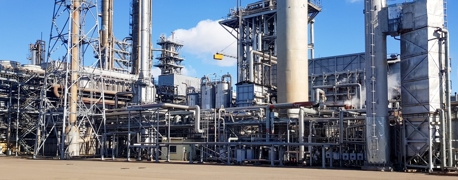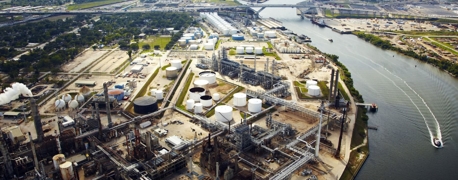Blast Injuries Caused by Force of Explosion

When discussing explosion injuries, it’s common to bring up some of the most obvious ones. Explosions have obvious repercussions involving contact with fire, heavy objects, and other things a person comes in contact with during one. However, there’s another source of explosion injury that many people don’t always think of: the blast. While nearly invisible to the eye, a blast’s force can cause significant injuries.
Blast injuries occur from the force of an explosion’s blast rather than the objects it throws or the heat it produces. Notably, the Centers for Disease Control states that blast injuries are usually seen on battlefields. Yet, workers across the nation are at risk of being exposed to explosions and suffering from injuries no one should have to face—whether at war or at work.
Blast Injuries at a Glance
Explosions have the potential to injure many people at once, and the injuries are often severe. Because they are so uncommon, few medical professionals in the U.S. have experience with blast injuries.
The following factors will influence the severity of blast injuries:
- How close the victim was to the source of the blast
- The materials involved, including the type and amount
- The surrounding environment and any obstacles or protective barriers between the victim and the blast
An explosion in a confined space, such as in a building or vehicle, is more likely to cause fatal blast injuries.
Understanding What Causes Blast Injuries
First, it’s important to understand the “invisible” forces that cause blast injuries. Blast overpressure is the pressure caused by an explosion’s shockwave. Overpressure describes any time something causes a person to experience a force that is above what typical atmospheric pressure produces. The stronger an explosion, the more blast overpressure a person is likely to experience. As a shockwave travels, it loses strength—making how close a person is to an explosion an important determination for how much force they experience from it.
So, two important factors influence the force of overpressure caused by shockwaves: the strength of an explosion and a person’s proximity to it.
Blast Lung
Blast lung is an injury that occurs from an explosion’s over-pressurization wave. It’s described as the occurrence of respiratory difficulty without obvious injury to the chest. The CDC notes how important this injury is to recognize because it’s the most common fatal injury among initial survivors of an explosion. Signs of it are typically obvious immediately after a person survives an explosion. However, some cases have been observed as late as 48 hours after exposure to a blast.
Signs of blast lung include:
- Coughing
- Hemoptysis (coughing up blood)
- Difficulty breathing
- Chest pain
- Low heart rate
- Low blood pressure
A person suffering from blast lung may have survived the initial explosion, but without immediate and proper treatment, they could lose their lives. Oxygen, airway management, mechanical ventilation, and intravenous fluids may all be a part of initial treatment for blast lung.
Brain Injuries Caused by Shockwaves
Just as with lung injuries, blasts can cause a person to sustain a traumatic brain injury. Notably, blasts can cause a person to sustain a mild traumatic brain injury (MTBI)—also known as a concussion—without any object contacting their head. Signs of a concussion caused by an explosion are not always obvious, making it important to seek medical attention if you were close to a blast but don’t exhibit obvious injuries.
Signs of an MTBI caused by the force of a blast include:
- Headache
- Fatigue
- Poor concentration
- Lethargy
- Depression
- Anxiety
- Insomnia
Ear Injuries
Explosions can cause ear injuries that need to be examined by a doctor to determine how severe they are and what treatment they require.
Signs of an ear injury after an explosion include:
- Vertigo
- Bleeding from the ears
- Hearing loss
- Tinnitus (ringing in ears)
- Pain or discomfort near ears
- Discharge from ears
One of the most common types of ear injuries after an explosion is a tympanic member perforation. The tympanic membrane sits between the external and middle ear. It helps a person hear by vibrating when struck by sound waves. This injury is popularly referred to as a ruptured eardrum. If a person suspects they have a ruptured eardrum, it’s crucial to have the extent of their injury examined by a doctor.
Abdominal Injuries
Since the abdomen is the location of gas-containing portions of a person’s digestive system, it’s susceptible to injuries caused by pressurized blast shockwaves.
Abdominal injuries caused by blasts include:
- Bowel perforations
- Hemorrhages
- Mesenteric tears
- Lacerated organs
- Testicular ruptures
After an explosion, survivors should be monitored for signs of an abdominal injury. If left untreated for too long, abdominal injuries can be fatal or accompanied by serious complications.
Signs of an abdominal injury after an explosion include:
- Abdominal pain
- Nausea
- Vomiting
- Rectal pain
- Testicular pain
- Blood in stool
- The sensation of incomplete defecation
Secondary, Tertiary, Quaternary & Quinary Blast Injuries
Not all blast injuries are caused by the initial explosion itself. Some are the result of objects flying through the air or resulting fires. These are classified as secondary, tertiary, quaternary, and quinary blast injuries.
When an explosion happens, debris will be displaced by the blast. Some debris may come from the object or structure that exploded, while others may come from the resulting environment. Secondary blast injuries are caused by either type of debris. They are more common than primary blast injuries because a considerable amount of material may be displaced in an explosion, and it may travel a considerable distance. Some blast debris may travel faster than a bullet, causing serious trauma to anyone it strikes.
Tertiary blast injuries occur when the force of a blast wind causes a person's body to fly or fall. Injuries caused by collapsing structures and entrapment in fallen buildings also fall in this category. Tertiary blast injuries can cause life-threatening trauma such as skull fractures, broken bones, internal organ damage, abdominal injuries, amputation, and spinal injuries.
Quaternary blast injuries include all types of trauma that are not classified as secondary or tertiary. These are not necessarily caused by the blast itself but rather the materials that were released as a result of the blast or other related trauma. Injuries caused by fire, fumes, and smoke may all be considered quaternary blast injuries. Psychological trauma may also fall under this category.
Finally, quinary blast injuries include illness or injury caused by contaminants released in or after an explosion. Chemical, biological, and radiological substances can cause significant harm to any people within a certain radius of the blast. The environment may also be affected. Chemical burns and radiation poisoning are examples of quinary blast injuries.
Did You Survive an Explosion? Call (888) 493-1629 for the Legal Help You Deserve
Surviving an explosion and the injuries one causes is the first step of recovery. If you’ve sustained injuries after a preventable explosion, whether at work or somewhere, you deserve help from an experienced law firm. At Arnold & Itkin, our team has helped people recover from explosions at refineries, industrial plants, oil rigs, and other locations. We’ve done this by standing up for their rights, demanding answers from those who could’ve prevented the accident, and seeking the compensation they need to rebuild their lives.
Call us today for a free consultation with explosion lawyers who’ve recovered billions for clients. We’re standing by to hear your story right now at (888) 493-1629.
- Categories


